By Johna Till Johnson
(Addendum and photos by Vladimir Brezina)
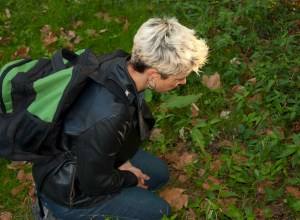 I’ve never had much of an “eye”, in the sense of being able to relate to things visually—or even notice them in the first place.
I’ve never had much of an “eye”, in the sense of being able to relate to things visually—or even notice them in the first place.
The opposite, in fact. I’m one of those people who can walk by a large object—say, a 60-story building—every day for a month before exclaiming, “Has that always been there? I’ve never seen it before!” And I’m perfectly sincere: I really haven’t noticed it. I think in terms of narratives, not pictures—and I often fail to see what’s literally right in front of my nose.
So a few months back when I was on a trip to the Arctic in the company of some fantastic photographers (more on that in an upcoming post), it truly amazed me how differently each person saw the same scene.
Toward the end of the trip, I was chatting with one of the better photographers, who had taken a spectacular picture of a place we’d been to as part of a group. We’d landed from Zodiacs, dropped off our life jackets in a box on shore, and headed up for a hike in the mountains.
The photo was of the pile of life jackets in the box, against the backdrop of the beach. It captured the loneliness and desolation of the location beautifully, and was a visually stunning composition as well: the red-orange life jackets a vivid splash of color against the misty blues, pinks, and yellows of the far northern light.
I had been there, but I hadn’t even seen the pile of life jackets (or I’d seen but not noticed). I was distracted by the waves, ice floes, mountains, and the two dozen or so other people. And interestingly, although most of the other people had cameras as well, nobody had taken a shot remotely close to his.
When I complimented the photographer on his exceptional eye, he replied, “Everyone has the ability to see things.” My response, naturally enough, was, “I don’t.”
“Nonsense,” he said (or words to that effect). “Everyone can learn to see: I did.”
He went on to tell me that when he was a schoolboy, one of his teachers had given his class an unusual homework assignment: Map out a square meter of ground outdoors somewhere and go look at it every day for a year. Look—really look—and report back on what you see.
That captured my imagination.
When I got back from the trip, Vlad and I agreed to map out a spot in Central Park and visit it each week. Vlad already has a spectacular eye (as anyone who sees his photos can attest). But he liked the idea of looking again and again at a particular place, watching it change through the seasons.
Our criteria were simple: It had to be relatively easy to get to, with landmarks sufficient for orientation, but fundamentally boring in conventional terms—a place that would require work and effort to appreciate visually.
We located a spot beneath a chestnut tree, just off Central Park’s loop drive. There was nothing particular to recommend the spot: just patches of tufty grass and scrubby flowers, with here and there some dry leaves left over from the autumn before.
I sat down to look, and discovered I hadn’t the vaguest clue how to begin. How, exactly, do you “look” at something—particularly when you don’t know what you’re looking for?
My logical, structured, engineering side took over, and I decided to mentally divide the ground into small squares and methodically examine each in order.
Guess what? That didn’t work at all.
My mind quickly interpolated for me, and instead of seeing each unique square of ground, it replaced them with a sort of “summary vision” that was blurry and indistinct. (I’ve since learned this is actually characteristic of many mental processes. For example, when reading, our minds “fill in the gaps” of each word, so we quickly grasp and recognize words as a whole without parsing each individual character.)
After a bit I decided just to sit quietly and let my mind wander, and see what I noticed. A few seconds later, I was rewarded by the sight of something moving: An ant, walking along a fallen branch. Soon I noticed another ant, and another following the same track… and grew absorbed in watching the insects parade back and forth on their “highways” of branches and dry leaves.
I was delighted by the first day’s experiment. I’d learned to see!
And in subsequent weeks, I looked and saw as leaves flamed out in fall colors and fell; as various insects buzzed, marched, flew, and ultimately disappeared; as flowers bloomed and faded; as the grass turned brown and dry. Chestnuts fell, mouldered, and split open. Patches of bare earth appeared among the clumps of grass, and grew bigger as the grass receded.
This “boring” patch of ground has become a fascinating panorama. Every time, I’ve seen something I’ve never seen before. Our last visit was yesterday (fittingly enough, on the first day of the new year), and the new sight was of hard nubs of flower buds, poking up through the moist earth. Vlad thinks they are snowdrops, and won’t be damaged when the winter’s freeze sets in.
I hope so. We’ll see. And more importantly, I will see!
The most fascinating part of the experiment, thus far, has been the impact it’s had on my ability to see other things.
It’s not that my eyesight has improved, obviously (although some days it feels that way). It’s that I now have the ability to pick up on beautiful things all around me. Not just the big, obvious beautiful things (like sunsets, or the way the light bounces off a building), but tiny, obscure things that would have been invisible to me before.
For example, on a recent walk with Vlad, I noticed a group of silvery-brown seed pods glittering in the dry undergrowth. We stopped, and he took some beautiful photographs of them, which you can see here.
It’s a small thing, and something that good photographers—and many other people—take for granted. But I’m proud of my new-found ability to look… and to see.
Addendum (by Vladimir Brezina):
Johna is in good company when it comes to appreciating the value of disciplined observation.
Since September, The New York Times has been running a weekly series, entitled “Autumn Unfolds”, that has tracked the progress of fall, and now of winter, in a small patch of forest in Inwood Hill Park at the northern tip of Manhattan…
And just today I came across a commentary on MOMA‘s de Kooning retrospective (which we still have to see!) that includes these observations:
After meeting Bill de Kooning, one thing that first became apparent was that he had amazing skills of observation. Not only was he more visually active than everyone else but he also appeared to enjoy the act of seeing more than anyone. It seemed like he noticed everything and was able to find something extraordinary in the most ordinary of places.
……… Many times the first thing he would say about the painting he was working on was, “It reminds me of…” and it could be anything, such as a bedroom with an unmade bed, or a bathroom with a tub and sink, or maybe a couch. Or it could be a beach scene with the surf, sand, atmosphere and sky, and some figures laying around… all suggested by a few simple lines. All he needed was the suggestion of form and his imagination would take off. Another person might see something completely different or nothing at all and that was ok. But the free associations were very important to him, the surprising scenes of ordinary life.

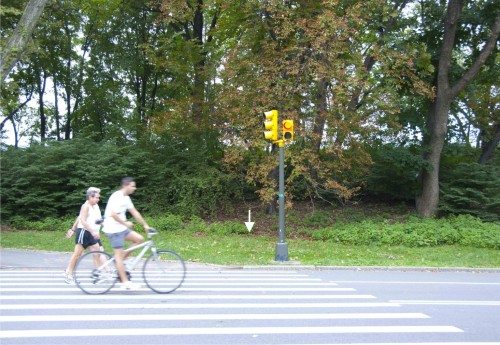

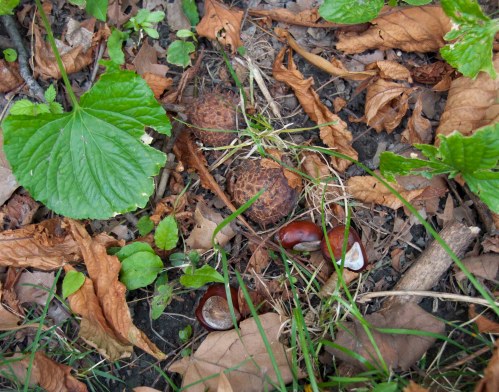
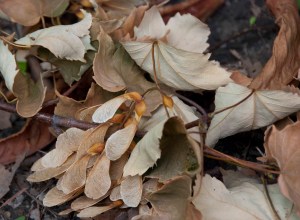
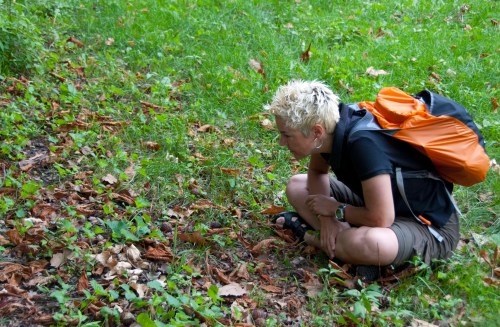

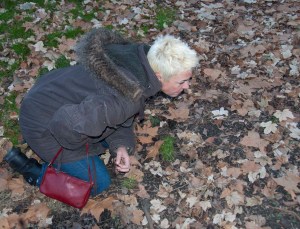
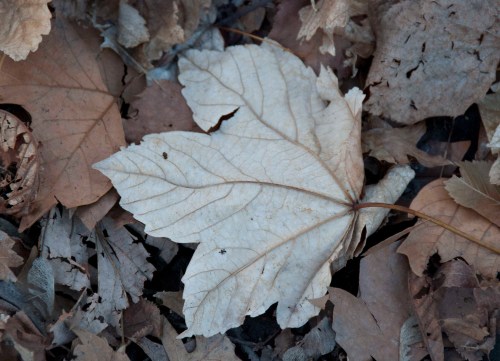




What a great post and a great adventure you are on!
LikeLike
Thank you! For me, people like you with great visual talent were always a mystery–how could they (you) *do* that? I don’t pretend I’m there, but it’s quite wonderful to know I can make progress…
LikeLike
Johna, what a wonderful piece. I learned to see just in the last year–I sat in front of paintings and took a pen and started writing. What amazed me was not just what I saw as I wrote but what I remembered. Funny, I have always said I was not a visual person…but I learned to uncover that part of me. I still remain more engaged in the tactile world, but I love all that I now see! Thanks for sharing your insight!
LikeLike
Anna–
Thanks so much for reading! Yes, I know what you mean about “the tactile world”—I had to stop myself noticing the way things smell and feel, and focus on looking. (But I can still remember the smell of the damp earth yesterday!). It’s wonderful to know it’s never too late to learn to see!
LikeLike
What a fascinating exercise. It reminds me a bit of reading E. O. Wilson’s works where he talks about the world of ants he observes that the rest of us simply pass on by most of the time.
And Johna, in my humble opinion, you have never suffered in your ability to see. There are constantly things you point out on paddles that I, for one, have glossed over.
LikeLike
Johna, it’s funny you were working on this at the same time I was having the startling realization that I, too, am more narrative-based. I figured this out as my friend Melissa was able to recall amazing details about the environment of our races — the type of day, the weather, different scenes throughout the race that she observed. For me, I totally zoned out and used the time not to think or see and, therefore, unless it physically affected me (like the teenage couple shoving each other right next to me), I was oblivious. It wasn’t until I read her remarkable blog later that I understood what I was failing to process. Glad one of us is able to remedy that ;-)
LikeLike
Hi Sandra– All I can tell you is that it’s learn-able. But like a kinesthetic sense (another ability I wasn’t copiously endowed with at birth), it’s one of those things you have to know exists before you can begin to practice it.
Amazing that learning doesn’t stop when you’re 10, or 20, or 50…..
LikeLike
:-) I’m learning, Reid. But honestly, I never understood what “visual composition” was until someone explained it to me….and I’m still getting used to what it takes to really look at something!
Thanks for posting!
LikeLike
Terrific entry. Your exercise is not unlike a task that photographer Freeman Patterson recommends as one way to learn “how to see.” What’s really going on, I think, is that you’re learning to think in a different way. You’re learning to pay attention, for lack of a better phrase, to what you’ve been seeing–but not really processing cognitively–all along. Based on your description, it appears as though you’re progressing at warp speed!
LikeLike
i love this essay . . . reminds me of anne dillard. a friend from log ago once explained she couldn’t sketch a scene until she “saw” it. when we were out hiking, strolling, i’d point out something and she’s often say she hadn’t seen it; actually she would see many things that i did not. also, when my children were young, they saw many things i missed . . . happy new year to you both.
LikeLike
Beautiful, Johna.
LikeLike
Pingback: Weekly Photo Challenge: Ready | Wind Against Current
Pingback: Spring Has Sprung, Seemingly | Wind Against Current
Johna, this is a fantastic post, I adore the idea of mapping out a patch of land and watching it over time. I am stealing the idea! Also, have you already written about your trip to the Arctic and I just missed it? I cannot wait to hear about it, I am longing to visit both the Arctic and Antarctic, and would LOVE to know how your Arctic trip came about. xxx Ailsa
LikeLike
ailsapm:
Thank you so much, and feel free to “steal” the idea—-it’s not a zero sum game! The more who do it, the better.
Thanks also for the “poke” about the Arctic trip. You’re correct, it hasn’t been written yet. I keep promising to do it. Now I will.
Thanks!
LikeLike
I have just read your Sweetwater report (now waiting for the second part) and this piece on observation. It reminds me of a famous (at least to Art Historians) watercolor by Albrecht Dürer, “The Great Piece of Turf”, done in 1503, a magnificent act of seeing.
http://www.gardendesign.com/art-botany-albrecht-durers-great-piece-of-turf
I love your trip reports. Hope to meet the two of you on the river one of these days. I’m usually in a yellow and white Japanese folder and hang out as one of the dockmasters at Pier 96.
LikeLike
Thanks for the link to the Dürer watercolor, which brings back memories—I did study art history at one time…
And it makes me think of my seagull… One of the most poignant things about old photographs is the little bit of unchanging nature that is often in there somewhere. Looking at an old city scene, the way the people are dressed, the cars, the signs, may all look inaccessibly dated, but in the corner somewhere there is a seagull (sometimes it’s a pigeon ;-) ) that looks just like seagulls look today, and it immediately provides an entry-point into that old, faded, black-and-white photograph that brings it to fresh life… The Dürer watercolor has that same quality.
Actually, that suggests a separate blog post of its own…
We will look for you on the river!
LikeLike
Pingback: Favorite Spot | Wind Against Current
I love that idea, and that you’ve chosen a truly nondescript square meter and revisited it every week to such great effect … Shame about the tasteless faux-strawberries on the weekend, though!
LikeLike
We just wanted to see things—to have them taste good as well was perhaps asking a bit too much… ;-)
LikeLike
Sometimes we need our other senses to help us see – what looks like a strawberry can only be verified by our noses and our taste buds … :)
LikeLike
We’ll try to apply that to all those mushrooms that we see in the park as well ;-)
LikeLike
Ooooo … I dunno Vlad … mushrooms or toadstools? :)
LikeLike
The taste will determine.
These, in Central Park a while back, sure look like mushrooms to me… ;-)
LikeLike
They do, don’t they. Did you smell them? I don’t know why I have such a thing about mushrooms but I’m scared to death about picking the wrong things and dying a slow and agonising death! Strange, since i don’t think there were any really poisonous types where i grew up :)
LikeLike
Well no, I wasn’t entirely serious. These are certainly not the kind of mushrooms you buy in the store, and I definitely wouldn’t try to eat them. But in Eastern Europe, where I originally come from, mushrooms of all kinds are picked and eaten, and so I don’t make the (British and US) culinary distinction between “mushrooms” (the white button kind) and “toadstools” (all others). Of course, you do have to know enough to not eat the really poisonous ones…
LikeLike
I didn’t think you were, Vlad – especially given the picture, but then I could’t be 100% sure, and knowing you were likely be to accustomed to a great variety of mushrooms, and even mushrooming maybe, i had to back peddle a bit!
My fear of mushrooms is real, however, and it seems i’m always happening on things mushroom – like this morning:
http://www.guardian.co.uk/theguardian/2012/sep/29/magic-mushrooms-food-fungi
LikeLike
Well, yes. Even in parts of the world where people know about mushrooms, such as Eastern Europe, a few people die each year. It’s just the cost of doing business ;-)
LikeLike
:)
LikeLike
I love this post. I think this is what the phrase meant “stop and smell the roses” or the “coffee”. Most of the times we no longer stop and appreciate the small things. Life in the city seems to be a blur to me. I’d like to do this exercise.
LikeLike
Go for it—it’s very worthwhile! :-)
LikeLike
This is a really wonderful story – not post, story. It’s almost a year after you wrote it, so I’m wondering if you’re still visiting that spot. When I was a girl, my father, a chemical engineer, took a series of photos of a view in our backyard each Sunday for one year – we lived upstate so the seasonal changes were powerful. I was the artistic one and he and my brother, the scientists, but those boundaries are softer than one might imagine. Engineer mind or not, the artistic impulse and the powers of observation can come together and make a gift. I’m so glad you did this and put the story up here.
LikeLike
I agree totally about art and science being closer than many people imagine… :-)
Yes, we do still visit that spot, although no longer every week. But it’s close by, and we often go by there simply on the way to somewhere else. And sometimes we even make a special trip to observe once more…. We will definitely have to pick it up again in the spring when nature starts to move once more.
Thanks so much for your lovely comment!
LikeLike
Pingback: Weekly Photo Challenge: A Day in My Life | Wind Against Current
Pingback: Weekly Photo Challenge & Travel Theme: Spring Close-up | Wind Against Current
A most intriguing idea! Often the small things are the most interesting, aren’t they? I am really enjoying your and Vlad’s posts and fantastic photography!
LikeLike
It’s more about finding something interesting about things usually deemed uninteresting, but looking at them hard…
Thanks, and thanks for following our blog!!
LikeLike